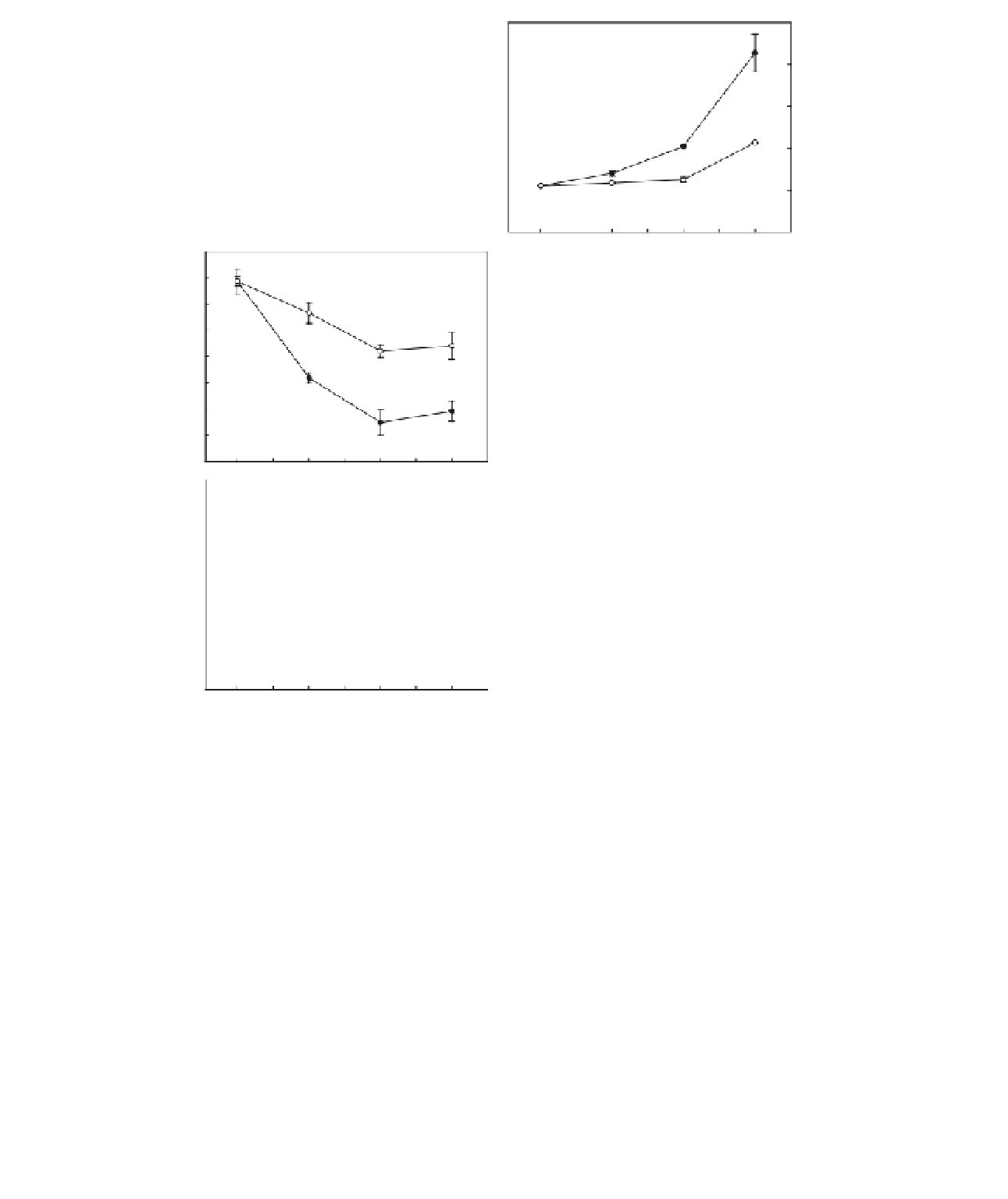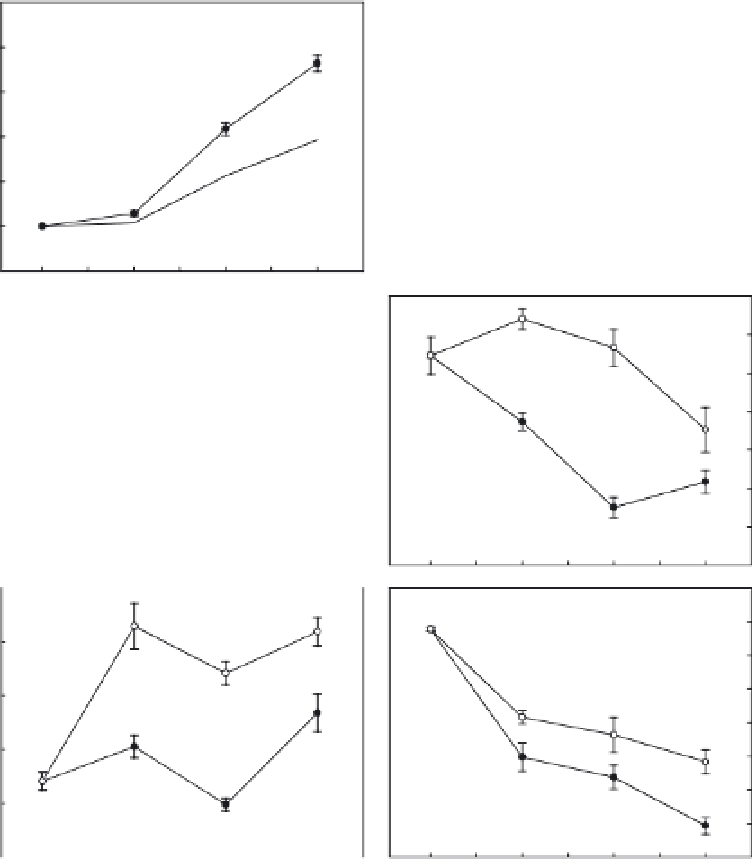Agriculture Reference
In-Depth Information
(A)
(B)
(C)
(D)
(E)
(F)
4UPSBHFUJNFEBZT
4UPSBHFUJNFEBZT
Figure 13.3.
Effects of a 6-hour pure N
2
gas treatment (◦) versus the control (air only) treatment (•)on
pericarp browning index (A), relative electrolyte leakage rate (B), ATP (C), ADP (D), and AMP (E)
concentrations, and adenylate energy charge (F) level of lychee fruit during storage at 25
◦
C. Each value is the
treatment mean, and the vertical bar indicates the standard error where it exceeds the symbol size.
Jiang et al., 2005). Loss of quality can be partially allevi-
ated by keeping the fruit under conditions that minimize
moisture loss (i.e., reduce desiccation and subsequent skin
browning) (Somboonkaew and Terry, 2010b), and this ap-
proach must be accompanied by refrigeration. Depending
on the cultivar, temperatures between 4
◦
and 5
◦
C can effec-
tively extend the storage life of lychee (litchi) fruit without
inducing chilling injury (Table 13.1). Elevated CO
2
atmo-
spheres applied as MA or CA can increase storage life by
approximately 5-10 days. Application of fungicides, such
as thiabendazole, iprodione, and prochloraz, helps gain ef-
fective control of spoilage pathogens. In addition, surface
coatings can be used to extend the longevity of stored fruit.
Jiang et al. (2005) reported that the use of 2% chitosan
extended the shelf life at ambient temperature over non-
chitosan-treated fruits when they were removed from cold
storage. Application of chitosan exhibits potential for qual-
ity maintenance and shelf life extension of lychee fruit
(Caro and Joas, 2005; Joas et al., 2005). Under conditions
of fungicide treatment, protective packing, high CO
2
con-
centration, and low temperature, lychee fruit has a storage
life of about 30 days.



Search WWH ::

Custom Search